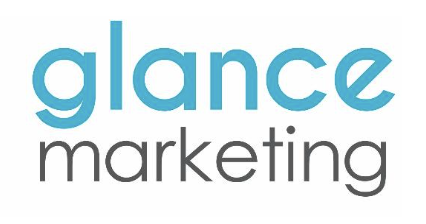How to Leverage Customer Success Stories for B2B Tech Marketing
Companies can boast about their products and services all day long, but it’s the voice of satisfied customers that often seals the deal. Customer success stories humanize your product and help potential clients envision themselves achieving similar results.
Why Customer Success Stories Are Vital in B2B Tech Marketing
Customer success stories build social proof, which is vital when prospects are making decisions based on trust and results. In the B2B tech world, where solutions are often complex, these stories validate your product's worth and reduce perceived risks for buyers.
Key Benefits:
Build Trust: Real experiences from satisfied customers make your brand credible.
Showcase Results: Demonstrating measurable impact helps potential clients justify their investment.
Shorten Sales Cycles: Success stories address common concerns and push leads toward decisions faster.
Formats of Customer Success Stories: Which to Use and When
Different formats of customer success stories serve various purposes. Here’s a breakdown of the main types and where they fit into your strategy:
a) Testimonials: Bite-Sized Trust Builders - Quick Impact, Maximum Flexibility
Customer testimonials are concise, positive statements from existing clients about their experiences with your product or service. These short quotes are easy to digest and can be placed throughout your website, marketing materials, and social media platforms. In the B2B tech space, where decision-making often involves multiple stakeholders and is based on performance, testimonials add authenticity and trustworthiness to your brand.
Best for:
Landing Pages
Email Marketing
Product Pages
Example: "Since adopting XYZ product, our system downtime has reduced by 60%, leading to more streamlined operations."
— Jane Smith, CTO at ABC Tech
b) Case Studies: Deep Dives into Success - Detailed, Data-Driven Validation
While testimonials are short and impactful, case studies offer an in-depth look at how your technology helped a specific client overcome a challenge. Case studies not only describe the problem and solution but also provide tangible results, such as metrics, KPIs, and growth figures. In the B2B tech industry, where purchasing decisions often involve long sales cycles and complex solutions, case studies help validate the effectiveness of your product and can directly address concerns potential buyers may have.
Best For:
Product pages
Sales presentations
White papers
Example Headline: “XYZ Company Boosts Operational Efficiency by 40% Using [Product]”
c) Success Stories: Narrative-Driven Engagement - Stories That Resonate
Success stories are a more narrative form of customer stories, blending elements of testimonials and case studies with an engaging storyline. These are particularly effective for marketing campaigns, videos, or blogs where storytelling plays a key role in building emotional connections. In a B2B tech context, success stories highlight the transformational journey a client went through with your product—emphasizing not just the technical outcomes, but also the personal and organizational impact.
Best For:
Blog posts
Video content
Webinars
Example: A video featuring a customer sharing how XYZ product transformed their operations, highlighting both business and personal impact.
Best Practices for Using Customer Success Stories Effectively
Be Authentic: Customers want to hear real stories, not overly polished marketing scripts. Let your clients speak in their own words and share genuine feedback.
Focus on Results: B2B buyers are analytical and data-driven. Highlight tangible benefits like cost savings, productivity boosts, or performance improvements. Use hard numbers wherever possible.
Tailor Stories to Different Personas: Each decision-maker in a tech-buying process has different priorities. While a CTO might care about the technical specs, a CFO will be more interested in ROI. Make sure your success stories appeal to various personas by focusing on what matters most to them.
Update Regularly: As your company grows and your product evolves, so will your customer base. Continuously seek new customer success stories and update old ones to keep them relevant.
Diversify Formats: Success stories can take many forms—written case studies, short testimonials, video interviews, or even interactive webinars. Diversifying the format of these stories allows you to reach a broader audience and engage them in different ways.
Channels to Amplify Customer Success Stories
Once you’ve crafted your success stories, knowing where to distribute them is crucial. Here are the top channels to get them noticed:
a) Website Placement
Landing Pages: Add testimonials near CTAs to boost conversions.
Product Pages: Highlight relevant case studies to show product effectiveness in action.
b) Email Campaigns
Nurture Series: Feature short success snippets in nurture sequences to build credibility.
Sales Follow-Ups: Include a tailored case study relevant to a prospect’s industry.
c) Social Media
Post snippets of testimonials or share case studies with engaging visuals.
Use LinkedIn to post industry-relevant case studies that target decision-makers.
d) Webinars and Events
Invite satisfied customers to speak during webinars or events.
Share case studies during product demos to validate your claims.
Measuring the Impact of Success Stories
To understand how well your customer stories are working, track key performance indicators (KPIs):
Conversion Rate - Do landing pages with testimonials have higher conversion rates?
Engagement Levels - Monitor how many views, clicks, or shares case studies receive.
Lead Generation - Are prospects referencing success stories during sales calls? This indicates their influence on decision-making.
Start Telling Your Customer Success Stories Today
Customer success stories are essential for building trust and credibility in the B2B tech industry. By showcasing real-world results, you demonstrate the effectiveness of your solutions, making it easier for potential clients to picture their success. Whether in the form of testimonials, case studies, or full success stories, these pieces provide compelling, data-driven proof of your product’s value.
Transform your satisfied customers into your greatest marketing asset - Contact our experts at Glance Marketing today!
